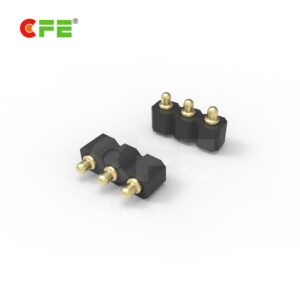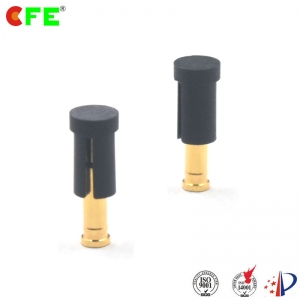For decades, spring-loaded pins are also pogo-type pins, providing excellent mechanical and electrical performance in highly compatible contacts. However, since each pin is made of 3-4 prudent parts and assembled in a laborious, incomplete automation process, it often produces high costs.
For example, a single test socket for reliability and aging testing may require hundreds or even thousands of spring-loaded pins in a fine pitch configuration. The same applies to board-to-board compression connectors. When taking into account the multiple of the test socket and the number of production-grade connectors, the number of pins may reach millions.
Traditional Pogo Pin Design
Although designed and manufactured in a clever way, the pogo pins are usually made of a pin, two plungers, and a spring enclosed in a metal housing.
This pin is highly compatible, which means it is designed to be compressed or “fit” during the insertion process. This is critical despite the potential unevenness of the surface, unevenness, parallelism and flatness, or pivoting or rotating components, despite maintaining good connections.
 |
 |
| [MF100-1112-A03100A] 2.54 mm pitch SMT spring test probes connector | [MF300-3111-010001A] 2.54 mm pitch spring loaded electrical contacts connector |
Application of spring-loaded pin
There are many different industries that Pogo Pin is available as application.
A market for regular use of fine pitch spring probes is used for electronic reliability testing, including aging, HTOL, HAST, THB and other test protocols. For this type of test, the receptacle is fabricated to provide an intermediate (temporary) connection through a pin array between the printed circuit board (PCB) and the component under test or the multi-chip module. And then connect the PCB to a computer or other device for data acquisition and analysis to determine the pass or fail.
Another market is a compression board-to-board connector for electronic products for telecommunications, telecommunications, medical, aerospace and military applications. These special connectors use spring probe technology to create a single-sided connector that is mounted on a pad on the PCB. Advantages of spring connections include the elimination of sockets to reduce costs, save space, “one click” accessories and disassembly as well as high durability.
For more related post:






